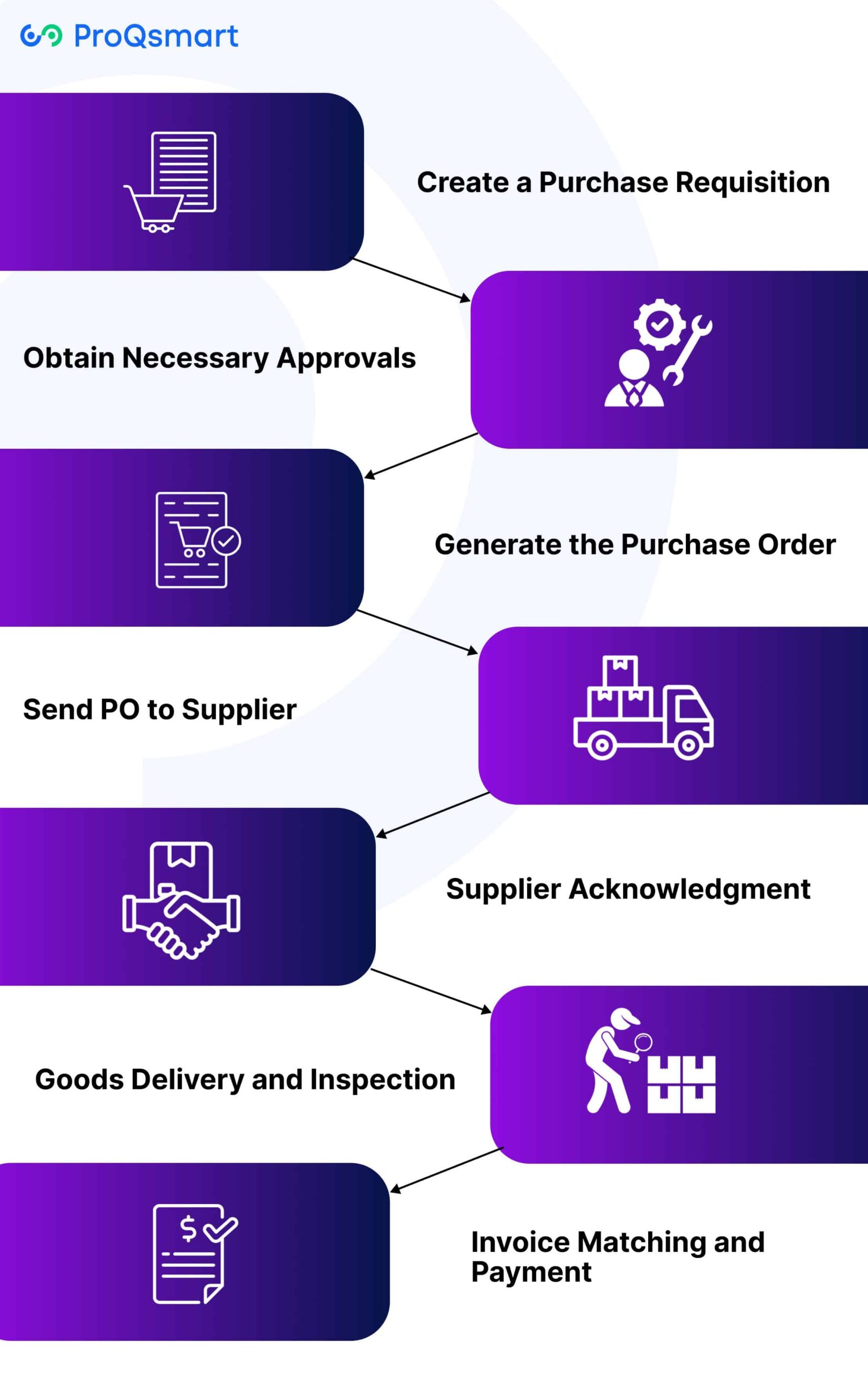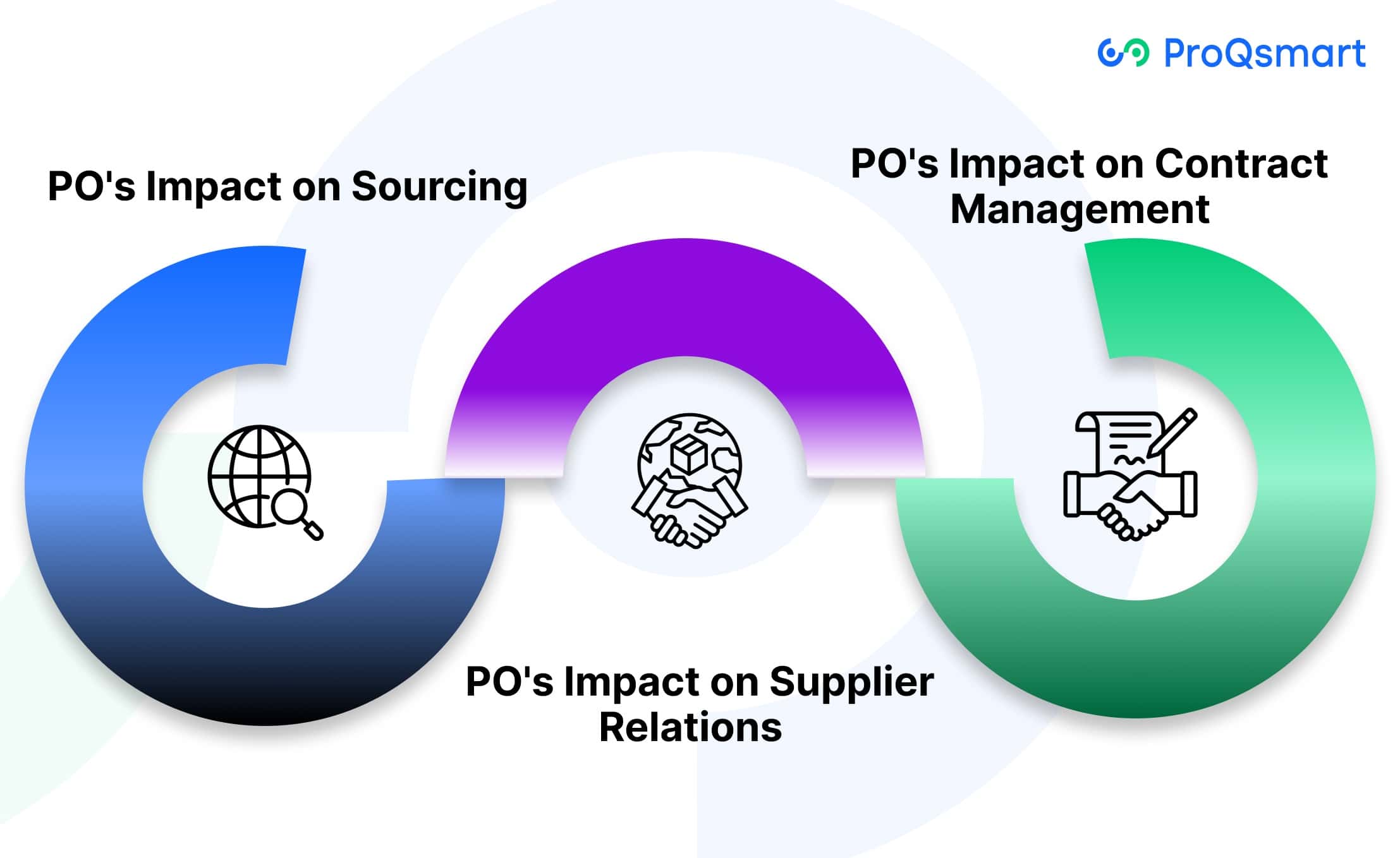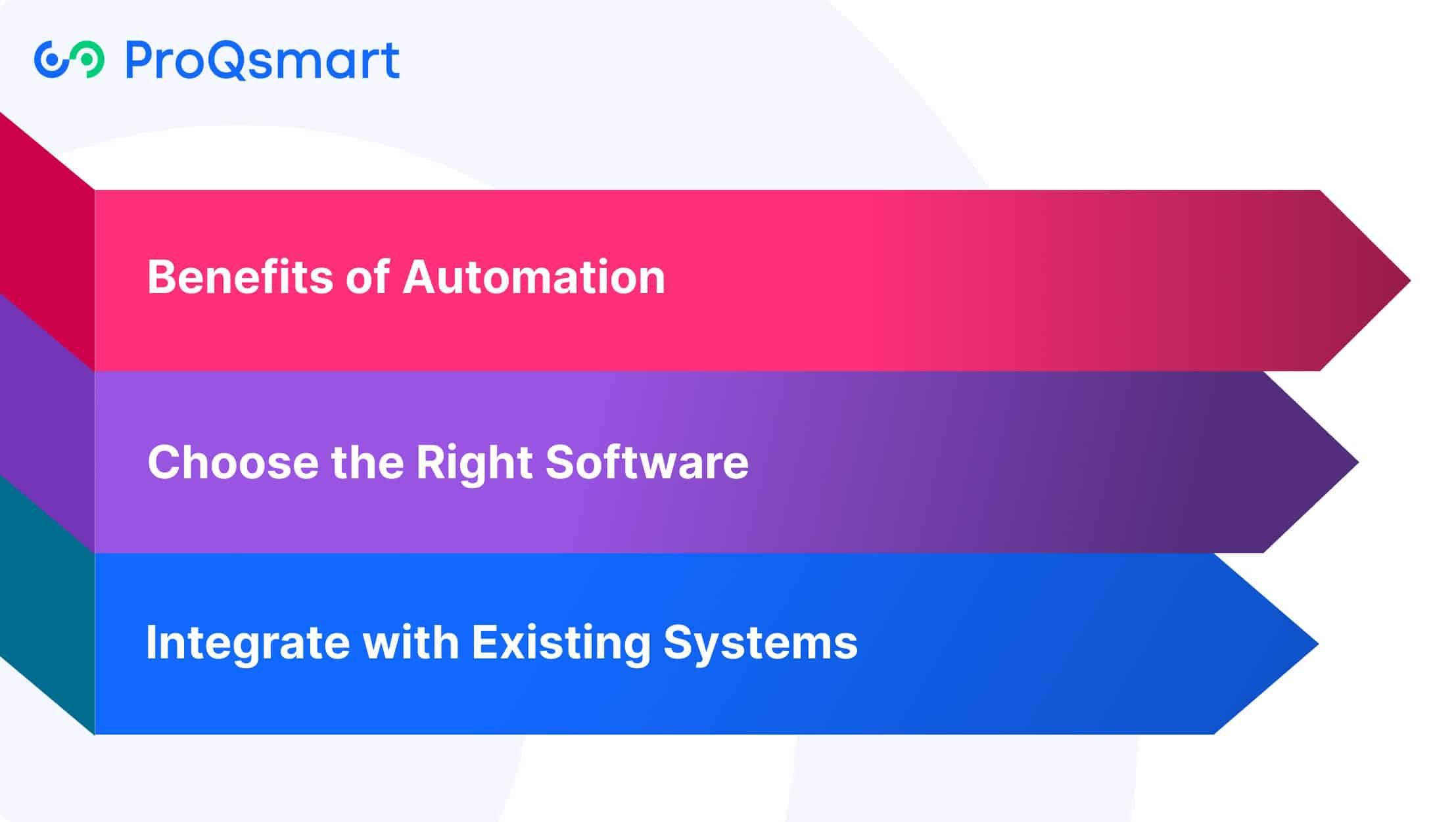Purchase orders (POs) are the backbone of efficient procurement, ensuring that every transaction is clear, structured, and legally binding. A well-defined PO process eliminates confusion by specifying the goods or services required, quantities, pricing, and purchase terms, creating a binding agreement between buyers and suppliers.
Beyond just documentation, purchase orders enhance financial planning, reduce errors, and improve accountability on both ends of the transaction. By streamlining the approval process, organizations can accelerate procurement cycles, minimize delays, and maintain better control over spending.
In this article, we’ll explore common bottlenecks in purchase order approvals and provide actionable strategies to optimize workflows for faster, more efficient procurement. Whether you’re managing direct materials for manufacturing or handling operational purchases, a well-structured PO process is key to reducing procurement friction and enhancing overall efficiency.
What is a Purchase Order?
A purchase order (PO) is a formal document that authorizes the purchase of specific goods or services from a vendor. It acts as a legally binding contract in the procurement process, clearly outlining the quantity, cost, payment terms, and delivery details to ensure transparency and prevent misinterpretation.
By standardizing procurement, POs enhance communication, streamline operations, and reduce manual effort. They eliminate guesswork, allowing buyers and suppliers to operate with greater efficiency and accountability. Additionally, the Accounts Payable team can avoid unnecessary delays and confusion by having a structured process in place.
One key advantage of purchase orders is payment flexibility—buyers can negotiate payment terms such as 30, 60, or even 120 days, giving them better control over financial planning.
The main features of a purchase order include:
- Unique identifiers for tracking
- Item descriptions and quantities
- Shipping and delivery instructions
Unlike invoices or sales orders, which focus on payment collection and sales recording, purchase orders facilitate approval before purchase, ensuring smooth procurement workflows. Notably, 80% of businesses have reported greater efficiency after implementing PO systems, reinforcing their importance in optimizing operations.
Purchase Order Process: A Step-by-Step Guide

In short, a purchase order (PO) is an essential document for making sure procurement is clear, accountable, and efficient. From initiation to payment, each step in the process requires careful attention to detail to ensure mistakes and payment delays don’t occur.
By approaching it in logical steps, businesses can optimize their processes and deliver a smooth transaction every time.
Create a Purchase Requisition
The process starts with recognizing a need for goods or services. A purchase requisition serves to formalize this request, providing information on specs, quantities, and timelines.
Issues frequently stem from incomplete or unclear requisitions, causing delays in processing.
ProQsmart’s inventory module automatically updates stock levels in real-time. It tracks and automatically generates requisitions when supplies run low, taking the guesswork out of ordering.
Obtain Necessary Approvals
While approval workflows can differ greatly from organization to organization, larger organizations further exacerbate the potential for bottlenecks with complex hierarchies.
Automating this step through platforms such as ProQsmart will help guarantee approvals are real time, cutting turnaround time, and increasing transparency and trust.
Generate the Purchase Order
Once approved, the contract purchase orders are created, containing all necessary information — item descriptions, pricing, terms, etc. Mistakes at this stage can snowball into expensive problems. Using purchase orders with standardized templates and automated systems drastically reduces the risks.
Send PO to Supplier
The PO is then routed to the supplier for acknowledgement. Without clear communication or recognition of these timelines, things can get derailed.
With a built-in collaboration feature, ProQsmart allows for instant communication with suppliers, helping you track when they have confirmed receipt.
Supplier Acknowledgment
Getting supplier confirmation on a purchase order ensures both parties are aligned on expectations. This step helps prevent miscommunication and discrepancies in pricing, quantities, and delivery terms.
A confirmed PO strengthens credibility and dependability, reducing the risk of last-minute surprises. By fostering clear communication, businesses can build stronger supplier relationships and maintain a smooth procurement process.
Goods Delivery and Inspection
Once delivered, items are carefully checked for quality and accuracy using purchase orders to ensure compliance. Any discrepancies should be resolved right away to prevent payment disputes, with tools like ProQsmart providing real-time tracking throughout the purchase order creation process.
Invoice Matching and Payment
Two-way or three-way matching between the PO, invoice, and receipt prevents incorrect or fraudulent payments.
Automating this step minimizes opportunities for manual errors and processing costs, frequently saving companies thousands of dollars in resources.
Purchase Orders in Procurement

Purchase orders (POs) are one of the most important procurement tools available. It serves as an official contract that a buyer issues to a supplier to confirm their intention to engage them in the provision of specific goods or services. A purchase order (PO) is not just a transactional document.
It has a powerful impact on cost control, steering budgets, and enforcing fiscal discipline. For example, when conducting an audit, POs serve as a great, verifiable record, showing exactly what was purchased, the terms, the quantities, etc. The process isn’t as independent or linear as it may appear, as it weaves into the overall procurement lifecycle—beginning with the recognition and articulation of business requirements.
PO’s Impact on Sourcing
Purchase orders directly impact how procurement engages in sourcing by creating a more uniform procurement process. They allow companies to maintain more predictable cash flow, with 80% of organizations using POs to enforce better operating discipline and efficiency.
For instance, three-way matching helps make sure details of an order—such as quantities, prices, and terms—match up between the PO, invoice, and packing slip. This consistency prevents errors and saves wasted costs.
PO’s Impact on Supplier Relations
Well-managed POs improve buyer-supplier relationships because they encourage transparency and help establish clear expectations. Digital platforms, such as ProQsmart, improve collaboration by involving all stakeholders through shared data, real-time updates, tracking, and supplier performance monitoring.
These processes breed trust and limit miscommunications that can lead to friction, making for easier, more productive transactions.
PO’s Impact on Contract Management
In contract management, POs help manage compliance with the terms agreed upon while making it easier to track them against the budget. ProQsmart’s automation tools help procurement get on the same financial page as your organization.
They allow for smooth integration with accounts payable systems and improve sourcing of capital expenditure.
Automate Your Purchase Order Process

Automation in the purchase order process removes blind spots, improves efficiency and increases accuracy. When you automate manual workflows with proven technology, you increase data accuracy, spend less time on repetitive tasks, and lower your operational costs.
Below, we take a look at some of the most important areas automation produces real-world wins.
Benefits of Automation
Core tasks including data entry, approval routing, and notifications are perfect candidates for automation. On average, manual purchase orders cost $506.62 per purchase order, due in part to costly, manual processes.
Automating data entry reduces the chance for error, like typos or missing information, which can result in expensive discrepancies. Automated notifications – by email, mobile, and text – help ensure all stakeholders are on the same page, increasing transparency and collaboration. According to businesses that have adopted automated purchase orders, they see a 20% decrease in the cost of supplier payments and invoice processing.
Automation enhances the customer experience by providing reliable tracking and smooth processing, building confidence in your organization.
Choose the Right Software
Choosing the right automation software is key to any successful automation effort. ProQsmart makes a difference with AI-driven tools that make procurement easy.
It streamlines procure-to-pay workflows, better aligns spending with available budgets, increases visibility into supplier performance, and improves overall compliance. Its e-tendering and subcontractor management tools simplify even the most complicated processes, creating a clear path to savings and transparency.
Integrate with Existing Systems
Seamless integration to existing systems means no headaches during rollout, especially when using purchase orders. ProQsmart’s compatibility with major ERPs is a great example of this. Moreover, the drag-and-drop interface enhances purchase order creation, providing customizable workflows to help you control spending.
Best Practices for PO Management
Effective and efficient PO management, including the use of digital purchase orders and standard purchase orders, is essential to preserving fiscal and operational integrity, reducing risk and errors, and achieving compliance. By following these best practices, organizations can enhance their purchasing functionality and streamline procurement processes while increasing overall performance.
Standardize PO Templates
Having standardized PO templates not only provides a consistent look and feel across departments, it lowers the chance of miscommunication. A properly formatted template should have all the necessary information like what the items are, how many, the price, delivery schedule, etc.
Standardization not only makes it easier to work with vendors but dovetails nicely with most compliance needs. Incorporating ProQsmart’s functionalities like bill of quantities handling and supplier performance tracking increases the precision of the templates. This enables you to make adjustments with ease and without effort.
Establish Clear Approval Workflows
Well-defined approval hierarchies improve decision-making efficiency and help avoid bottlenecks. With automated PO management solutions like ProQsmart, you can route approvals based on your department’s budget to expedite processing even further.
Automation helps validate data, cutting down on mistakes such as duplicate orders or pricing discrepancies.
Maintain Accurate Records
Proper recordkeeping goes a long way in supporting auditing efforts, forecasting needs, and keeping suppliers informed. ProQsmart connects to ERP and inventory management systems, removing data silos.
By leveraging PO data, companies can predict inventory requirements, better manage cash flow, and prevent stock shortages or overstock scenarios.
Regularly Audit POs
Regularly conducting audits helps ensure everyone is following the rules and helps you find any discrepancies. A three-way match—matching the PO, goods receipt, and invoice—provides a higher level of accuracy.
ProQsmart’s transparency features increase the efficiency of audits by centralizing and validating procurement data.
Conclusion
Purchase orders are the backbone of an efficient, transparent, and accountable procurement process. By streamlining how POs are created, managed, and tracked, organizations can minimize errors, save time, and build stronger supplier relationships.
Automating the PO process takes it a step further—eliminating inefficiencies, reducing costs, and allowing teams to focus on strategic procurement goals. Staying ahead with best practices ensures that your procurement operations remain agile and aligned with your evolving business needs.
Take control of your procurement with a smarter, more automated purchase order system. Explore how ProQsmart simplifies the PO process—book a demo today and transform the way you manage procurement.




